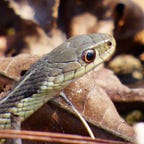Natural Hamilton in Pictures: Wildflowers, Fungi, and Insects
Part Two of a series of photographic explorations of natural Hamilton, Ontario, Canada throughout 2013.
The Small Things
For many years I made heavy use of a 2006 Canon Powershot camera to take close up photos of berries, insects, flowers, and amphibians. Around the time I got my iPhone in 2010 however, I slowly got out of this habit, as I felt the camera on an iPhone 4 was “good enough” and saved me a lot of hastle carrying around an extra camera.
As I began hiking daily in late 2012 it occurred to me I might want to have a better camera to do zoom photography, so could also capture birds and other distant or fast species decently. So, I invested in a new Canon Powershot (SX 260) and began taking photos with an actual real camera again.
Once plant growth began again in 2013, I was once again taking plenty of photos of flowers, butterflies, and much more. Having the extra zoom power also helped greatly as I could now “reach” small things much further away. The camera was no longer an “extra camera”, as it could do far more than a smartphone ever could.
In part two of Natural Hamilton in Pictures, my photos capture the wildflowers, fungi, and insects — the small things— found along trails and natural spaces in Hamilton. It is a collection of almost 200 photos and a handful of Vine videos, presented in chronological order without segmentation.
Note that some species are labelled as unidentified. If you can identify a species (or find something misidentified) please leave a comment or connect with me on Twitter.
Please feel free to post comments on photos (click the “+” that appears beside photos) or leave a comment here at the end. You can also follow me on Twitter, where forthcoming parts will be announced.
